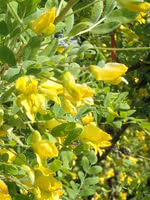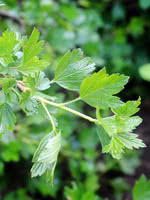Mon-Fri 9am - 5pm Mountain time
Common Caragana vs Northern Gooseberry
Caragana arborescens
Ribes oxyacanthoides
NOT AVAILABLE THIS SEASON - MIGHT RETURN
Common Caragana is a fast growing shrub that's known for its exceptional hardiness and drought tolerance. Although it's most commonly planted in shelterbelts, Common Caragana is also an excellent hedge or feature shrub.
Note: in warmer areas, this species can be difficult to contain once planted. Use the right plant in the right place.
Northern Gooseberry is a small, ornamental quality native shrub with prickly stems. You can plant it anywhere you'd plant Prickly Rose or Common Wild Rose, such as your yard.
Most people find Northern Gooseberry berries a bit tart for significant fresh eating but they are good for baking, wine or jam.
Common Caragana Quick Facts
Northern Gooseberry Quick Facts
In row spacing: 0.3 m (1.0 ft)

